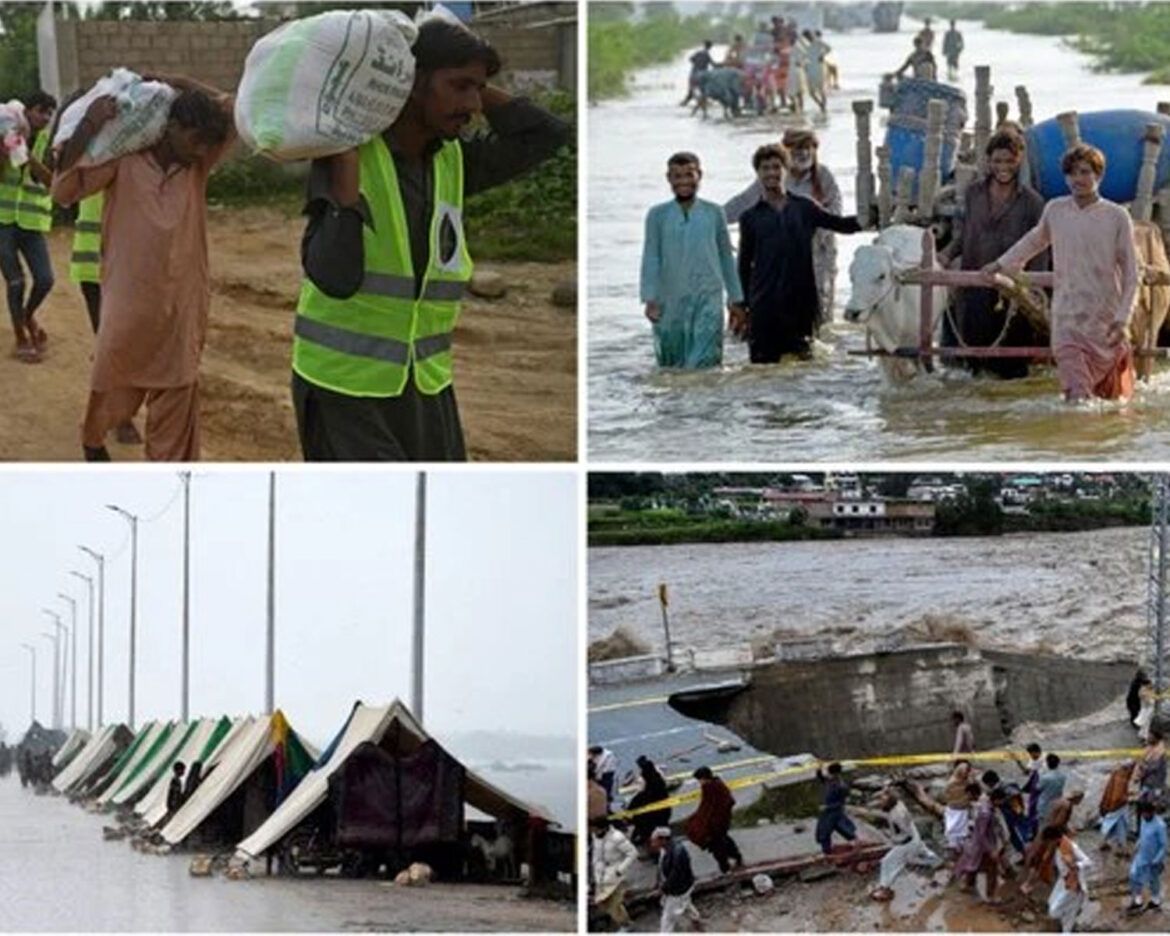Balochistan:
Balochistan is reeling from the catastrophic impact of Cyclone ‘Asna,’ with heavy rains causing extensive damage across the province. The death toll has risen to 33, with the recent downpours claiming the lives of three additional individuals.
The cyclone’s effects have inundated low-lying areas in several districts, including Ziarat, Qila Saifullah, Khuzdar, Loralai, Jhal Magsi, Sibi, Jaffarabad, Naseerabad, Lasbela, and Bolan. The provincial government has declared Jhal Magsi a disaster-affected area, joining a growing list of regions including Qalat, Ziarat, Sobatpur, Lasbela, Awaran, Jaffarabad, Osta Muhammad, Loralai, and Chagai.
The torrential rains have led to severe disruptions in communication and utility services. Mobile phones, internet, and electricity are down in many districts, with authorities relying on the Levies wireless system to manage communications in the affected areas.
In Chaman, Qila Abdullah, Qila Saifullah, and Ziarat, the flooding has devastated orchards and crops, while roads, bridges, and homes have been swept away. Hundreds are stranded in Qila Abdullah and Qila Saifullah, and emergency services are struggling to reach them.
The Provincial Disaster Management Authority (PDMA) reports that 33 people, including 13 children, have died since July 1, with 15 more injured. The heavy rains have destroyed 558 homes and partially damaged 13,986 others, impacting nearly 110,000 individuals. Agricultural losses are severe, with 58,799 acres of crops destroyed and 373 livestock perished. Additionally, seven national highway bridges are damaged, and the Quetta-Chaman railway line is blocked due to flood damage. The Khojak Tunnel is filled with mud, cutting off Harnai from the rest of Balochistan. Repair efforts are underway on a gas pipeline in Bolan, and gas supply has been restored in Quetta. The Rabi Canal breach has submerged multiple villages, and the Levies check post on the Sindh-Balochistan border has been washed away.
Sindh:
Sindh is also grappling with severe flooding following recent heavy rains. Several districts, including Pano Aqil, Jamshoro, Kambar Shahdadkot, Thul, Thatta, and Badin, have been particularly affected.
In Pano Aqil, waterlogging has left streets submerged under two feet of water, with local authorities failing to manage drainage, prompting protests from residents and traders. Jamshoro is experiencing ongoing rain and drainage issues, causing significant challenges for residents. Kambar Shahdadkot remains heavily flooded, with many displaced and waiting for government aid after their homes collapsed.
Thul has been battered by intermittent rains, flooding low-lying areas and impacting the Tehsil Headquarters Hospital. In Badin, widespread damage has occurred, with thousands of acres of crops ruined due to breaches in irrigation canals. Over a hundred small irrigation canals have failed, submerging crops of cotton, chili, tomato, onion, and rice, causing substantial financial losses for farmers. The lack of maintenance and cleaning of these canals is being criticized as a key factor in the flooding.
In Thatta, the rising water level in the Indus River near Sajawal has led to flooding in surrounding areas, forcing evacuations from low-lying regions.
Both provinces are in urgent need of aid and support as they recover from these devastating floods.



